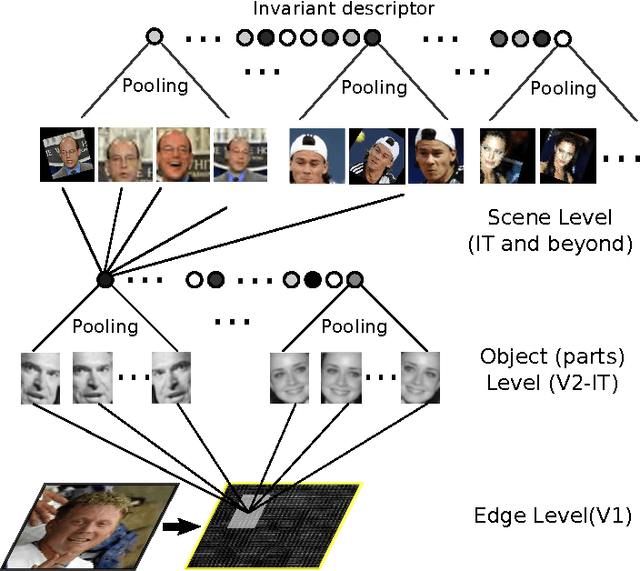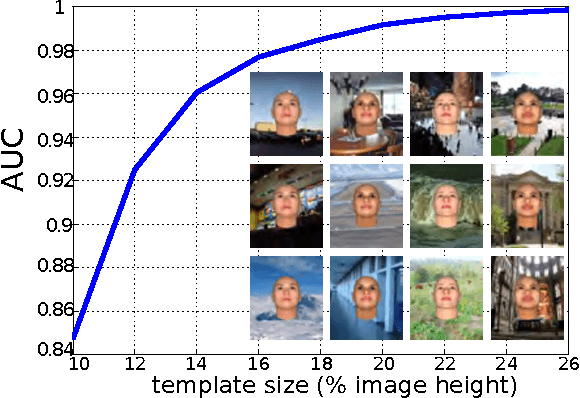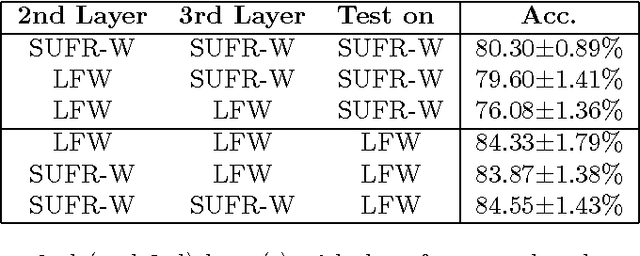Can a biologically-plausible hierarchy effectively replace face detection, alignment, and recognition pipelines?
Paper and Code
Mar 26, 2014



The standard approach to unconstrained face recognition in natural photographs is via a detection, alignment, recognition pipeline. While that approach has achieved impressive results, there are several reasons to be dissatisfied with it, among them is its lack of biological plausibility. A recent theory of invariant recognition by feedforward hierarchical networks, like HMAX, other convolutional networks, or possibly the ventral stream, implies an alternative approach to unconstrained face recognition. This approach accomplishes detection and alignment implicitly by storing transformations of training images (called templates) rather than explicitly detecting and aligning faces at test time. Here we propose a particular locality-sensitive hashing based voting scheme which we call "consensus of collisions" and show that it can be used to approximate the full 3-layer hierarchy implied by the theory. The resulting end-to-end system for unconstrained face recognition operates on photographs of faces taken under natural conditions, e.g., Labeled Faces in the Wild (LFW), without aligning or cropping them, as is normally done. It achieves a drastic improvement in the state of the art on this end-to-end task, reaching the same level of performance as the best systems operating on aligned, closely cropped images (no outside training data). It also performs well on two newer datasets, similar to LFW, but more difficult: LFW-jittered (new here) and SUFR-W.
 Add to Chrome
Add to Chrome Add to Firefox
Add to Firefox Add to Edge
Add to Edge